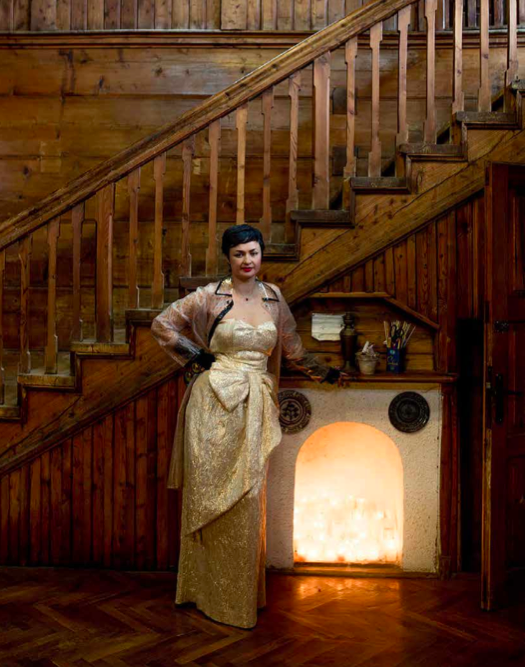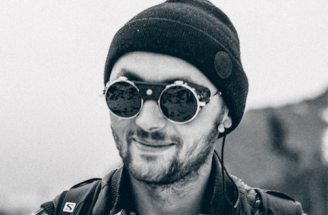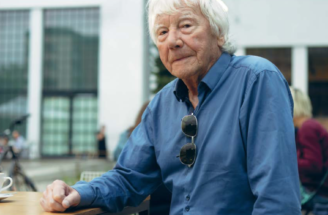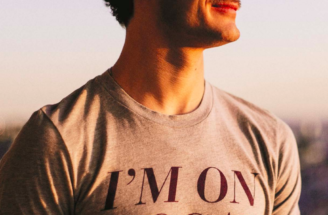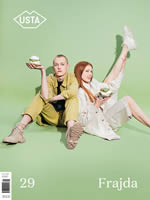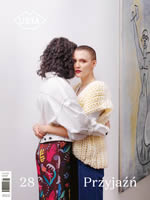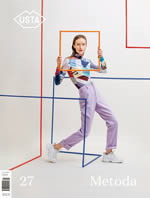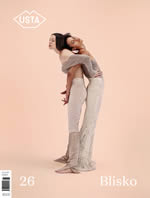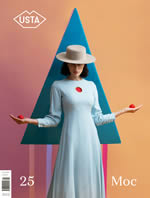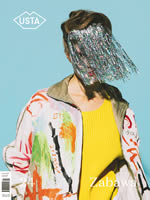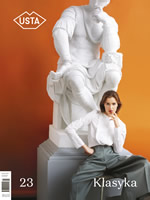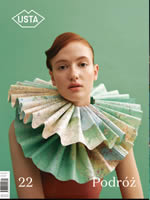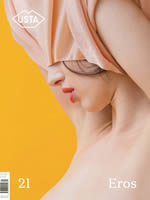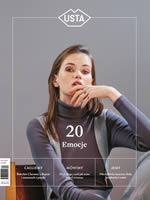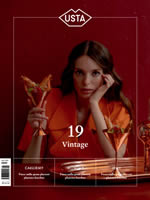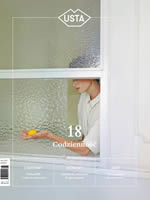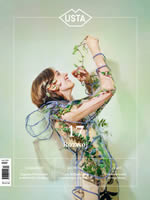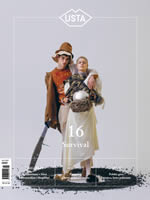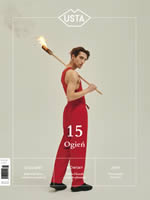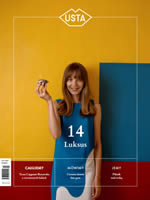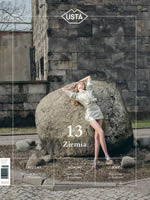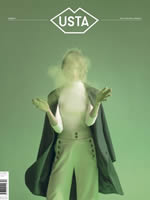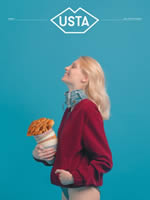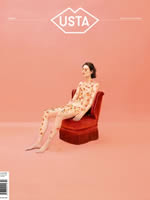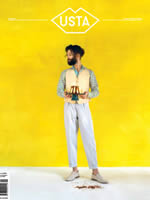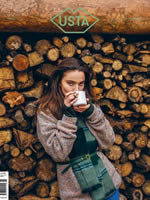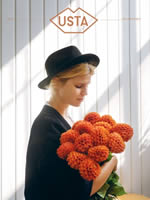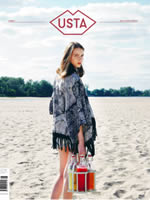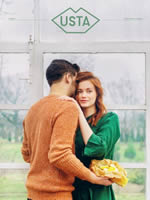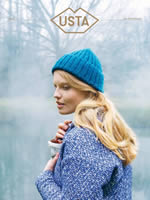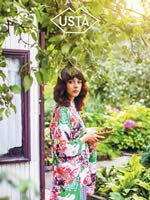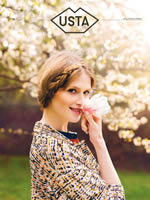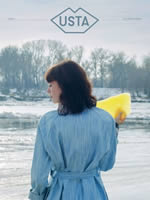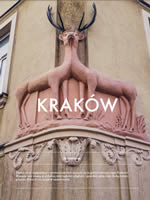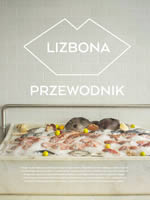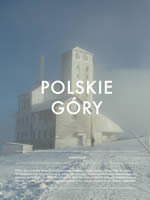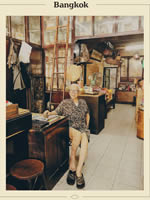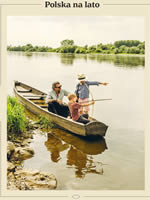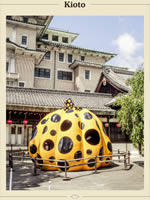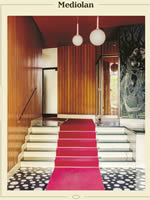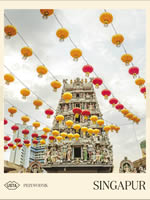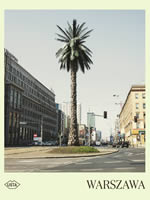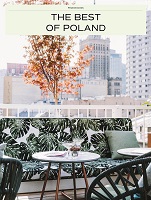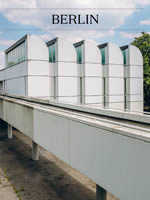It is an exceptional house which stands as a kind of shelter for artists and philosophers. Its dark, soaring structure is hidden in the greenery of an old garden. The larch stakes the house was made of at the beginning of the 20th century give the construction a gloomy, yet noble character. At first, the building was owned by Adam Kaden, the founder of the Rabka health resort. Over the years of its grandeur, the villa was visited by many renowned guests, such as Karol Szymanowski, Witkacy or Jarosław Iwaszkiewicz. In the later years, the building changed owners several times and finally has fallen into oblivion.
We arrived in Rabka in early August, on a sultry, clouded day, invited for the opening of a gargantuan happening action “Blask na drzewach jakiś chory (…) Zaczęły się meteory” (lit. “Glow on the trees has morbid air (…) Meteors have started” an excerpt from a poem by Jarosław Iwaszkiewicz). The works of Paulina Ołowska and of other artists* she had invited to join the action were hidden in various places in the house – from the attic to the beautiful, and somewhat wild garden. The guests were treated with mules from the Black Sea which went disturbingly well with the dark wooden interior of the villa in Rabka and with the obscure eroticism hidden in the villa’s nooks and crannies. After the sunset, the performance created to the symphony of Karol Szymanowski “Song of the Night” began. The deconstructed song’s lyrics were declaimed by a coal miner Wojciech Szymański, and accompanied by a music from an out of tune grand piano, played by Wojciech Sobczyk dressed in pyjamas. Tin moths were flying over the field and at the end, a silver moon appeared and fallen apart immediately. And it was at that moment that our conversation started.
How did you come across the Kadenówka villa?
It was by accident, or maybe it was a destiny? In 2014 I met in the Stromboli Island with Milovan Farronato, the Director of Fiorucci Art Trust and we started discussing a somewhat utopian idea – a common journey of artists, land art, mushrooms and mushroom picking. We searched for a house where we could work on art projects but also hide after a mountain hike. And it was then that we found the abandoned Kadenówka. Rabka is, on one hand, a popular resort with crowds of tourists, and on the other hand, a place associated with lung diseases, Jesus crucifixes on every second crossroads and teeth in the walls of an ancient church as the votive object of Saint Apolonia, and traffic jams in the streets. By the way, you stay here, have you had trouble on the way? Of course, I do see the local narrow-mindedness, but it is the role of artists and activists to change people’s mentality. The best way is to work “from the inside”, to show the actions to others, not only to those from the elite circles.
When I moved to Warsaw from Amsterdam in 2001 our capital was totally wild. There were no meeting places, galleries, nor places of a so-called “municipal comfort”. It was incredible and, looking at it from today’s perspective, it seemed like I was on planet Mars. I was fascinated with that state and it prompted me to take action. I liked the empty display windows of small shops, the remainings of the neons and of the socialist modernism. At that time we opened with Lucy McKenzie and Galeria Foksal Foundation Nova Popularna bar in Chmielna street, just like that, as a socio-artistic project. We didn’t want Warsaw to become the second Frankfurt. We wanted to negotiate in favour of these cool and queer places. Luckily, after some years many new initiatives were born, along with the change in co-existence of people of the city and their attitude towards their environment. It seemed to me that if we achieved success, my artistic work had been completed.
And it was then that it was time to move to Rabka?
In 2008, after finishing my scholarship at Daad in Berlin, together with my husband Bartosz Przybył-Ołowski we started to wonder where to move. We both come from the seaside, we also spent several years in Warsaw. At that time I was under the huge impression of the diaries of Zofia Stryjeńska, who fascinated me with her craze about nature and Slavic folklore. This is why we decided trying living in the countryside. We moved to Bartek’s parents’ house near Rabka Zdrój. In the beginning, it was hard to find oneself, I missed my friends, cafes, fashion, cinema. But at some point I just switched to the country mode and living outside the city became a kind of meditation. When I lived in Warsaw I would always lack time to concentrate. In our home I have this time, I can spend my days working and nothing distracts me from what I do.
You have a spacious atelier in Rabka. It must be your asylum on one side, but on the other, the local environment must feel quite claustrophobic: narrow roads, strong nationalism, everything overshadowed by the mountains…
The notions of “good” and “pretty” are of no interest for an artist. Artists are present where things are neither good nor pretty, they are present where everything falls apart. It is there that one can activate a change in thinking, both political and aesthetic. I find especially interesting the notion of locality as a shelter from fast, unified, boring mass, global culture. For example, I became fascinated with a small, falling-apart doll theatre in Rabka – Rabcio. It turned out that I’ve found there inspirations for four exhibitions and a theatre magazine. There is still a lot to be done looking from the perspective of small towns as the term Polish modernism doesn’t exist there at all. Whatever is old or falling apart, isn’t worthy of any interest. Maybe there is some truth to it but at the same time, there is so much beauty vanishing.
It is just terrible. Here in Poland, they throw away everything to replace it with Baum brick or tiles from home improvement hypermarkets. But you are fond of modernism, you saved a neon in Warsaw – the volleyball player, and helped revive Gazda neon, which shines in Rabka. Kadenówka – this ancient, beautiful villa, which hasn’t been entered in the national monuments register, is yet another attempt to rescue the past.
But it’s also the creation of the new. What I want is to build closeness and create communities on the local level. The life of a painter is a lonely life so maybe this is why I insist so much on communities. Kadenówka is an attempt to create an artistic shelter where you can come and spend time with other artists, create, experiment, or just be and listen to nature, not only to culture.
Artists all together in one place, it sounds a bit like a Utopia.
Utopias are most interesting and not as distant as they might seem. Things I like most are very abstract. USTA magazine also represents a certain utopia: beautiful people, tasty food, nice pictures. There is a lot to aspire to. I like your magazine because it is both practical and educational. I like your recipes and your ideas for interior decoration with simple things.
We are pleased to hear that. I understand that you give the example of the magazine as a certain fleeting utopia.
The magazines depict the present situation which can be interesting at a certain point of time. They don’t impose absoluteness like the books. I collect magazines and periodicals, I especially like the ambiguous ones which seem to have been published by accident. “Le Jardin des Modes” or “Soviet Life” were like that or “Ameryka”, “Ty i Ja”, or “Viva”, an American erotic magazine for women. I am drawn to the form of a magazine which this year led to the creation of the “Pavilionesque” magazine that I was founder and artistic director of. The magazine discusses the topic of theatre and contemporary times. We depict in an extravagant way the artists who deal with magic, bizarreness and marionettes.
This magazine is your personal project. Big format, golden lettering – it’s grand. The first issue is fully devoted to the doll theatre. What are the topics of the next ones and how did it working on the magazine go?
I released the first issue together with Cricoteka (Centre for the Documentation of the Art of Tadeusz Kantor) and Mudin publishing house. It is devoted to the topic of scale and province. I intend to release four issues, the next will raise the topic of costume sensuality and a woman with a doll. There will be texts about Unice Zürn, Cindy Sherman, Goshka Macuga, Ewa Juszkiewicz, Helga Franke and Emmy Hennings. The third issue, which I just can’t wait to have, is in turn dedicated to grotesque and burlesque. The fourth will deal with the future of theatre and science fiction.
THE ALCHEMIST
